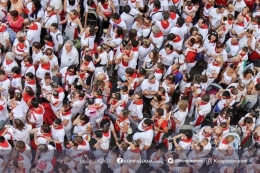Coca-Cola’s transformation from a local medicinal tonic to a globally recognized cultural icon is a remarkable story of innovation, strategic marketing, and global cultural resonance. Originally conceived in 1886 in Atlanta, Georgia, by pharmacist John Pemberton, Coca-Cola was intended as a medicinal remedy. Pemberton’s new “brain tonic,” a combination of coca leaves and kola nuts, was introduced during an era when soda fountains were the heart of social life. Though Pemberton’s early attempts to find a successful product had failed, he worked with Frank Robinson, a Union Army veteran with a knack for advertising, who designed Coca-Cola’s signature script logo and devised the brand’s name. With Robinson’s help, Pemberton’s creation gained a foothold in the burgeoning soda fountain culture of the time.
After Pemberton’s passing, the brand found a new leader in Asa Griggs Candler, who purchased the formula and realized Coca-Cola’s potential. Candler’s marketing genius expanded Coca-Cola from a regional beverage into a household name across the United States. He pioneered mass-marketing techniques by placing Coca-Cola’s name on everyday items like calendars, bookmarks, and even clocks, and distributed coupons for free samples. Candler understood that in giving people their first taste, he was creating loyal, repeat customers.
Candler’s efforts helped Coca-Cola grow exponentially in popularity throughout Atlanta and beyond. His next step was to bring Coca-Cola outside of soda fountains and into homes nationwide. In 1899, Candler licensed Chattanooga-based entrepreneurs Benjamin Thomas and Joseph Whitehead to bottle Coca-Cola, which allowed the drink to reach consumers far from soda fountains. Though early bottling technology was rudimentary, Coca-Cola adapted, leading to the creation of the distinctive contour bottle in 1915, an innovation that set the brand apart from imitators and made Coca-Cola instantly recognizable.
The next evolution of Coca-Cola’s expansion came under Robert Woodruff, who took over leadership in 1923 and began Coca-Cola’s international journey. Woodruff capitalized on the company’s immense potential abroad, initiating a strategy that would eventually turn Coca-Cola into a symbol of American life and culture worldwide. During World War II, Coca-Cola made a significant impact by supplying American troops with Coke, often through bottling plants established near military bases. This initiative, while logistical in nature, fostered an emotional bond between Coca-Cola and American soldiers, who shared the brand with foreign communities, inadvertently establishing it as a symbol of American ideals and lifestyle. This strategy firmly cemented Coca-Cola’s status as an international brand by the time the war ended.
Coca-Cola’s cultural integration went beyond product availability. In the 20th century, Coca-Cola became entwined with American holidays and lifestyle imagery. From Norman Rockwell’s famous illustrations to the depiction of Santa Claus in Coca-Cola advertisements, the brand shaped and popularized iconic images. These campaigns not only boosted sales but also solidified Coca-Cola’s place in American popular culture. The 1971 “Hilltop” commercial further expanded Coca-Cola’s appeal by embracing themes of unity and peace. Its famous jingle, “I’d Like to Buy the World a Coke,” resonated with audiences worldwide, embodying a vision of global connection amid a turbulent period.
However, Coca-Cola’s journey was not without missteps. In 1985, Coca-Cola attempted to replace its original formula with “New Coke,” hoping to capture a younger demographic. The move sparked an immediate and negative public reaction, highlighting the depth of consumer loyalty to the original recipe. Within months, Coca-Cola reintroduced the classic formula as “Coca-Cola Classic.” This incident underscored that Coca-Cola had evolved beyond just a soft drink—it had become an American tradition and an integral part of public memory.
As Coca-Cola entered the modern era, the brand continued to innovate, adapting to changing consumer preferences by exploring eco-friendly packaging, supporting global sports events, and embracing digital marketing. Coca-Cola’s approach to brand-building remains grounded in its ability to adapt to diverse cultures without losing its core identity. By customizing its branding and advertising to fit various cultural contexts, Coca-Cola connects with consumers on a personal level, sustaining its relevance across generations.
Today, Coca-Cola stands not only as a leading beverage brand but also as a powerful symbol of joy, tradition, and community. Its journey from a small pharmacy in Atlanta to a global cultural phenomenon illustrates the strength of innovative vision, strategic adaptability, and the ability to foster connections that transcend borders. The brand’s story serves as a testament to the power of enduring consumer loyalty and an evolving yet consistent message that has captured hearts around the world. Coca-Cola remains a product people recognize universally, embodying not just refreshment but an enduring legacy of shared moments across cultures.
Follow Instagram @kompasianacom juga Tiktok @kompasiana biar nggak ketinggalan event seru komunitas dan tips dapat cuan dari Kompasiana. Baca juga cerita inspiratif langsung dari smartphone kamu dengan bergabung di WhatsApp Channel Kompasiana di SINI







